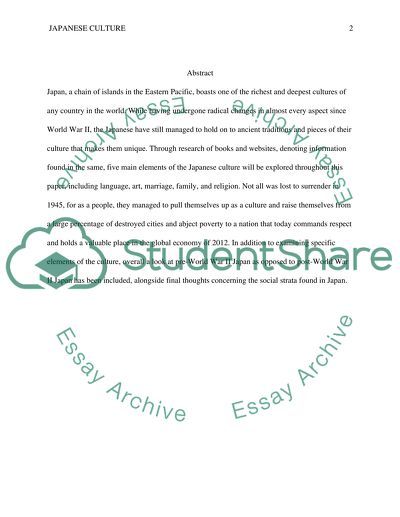Cite this document
(“The Culture of the Japanese Essay Example | Topics and Well Written Essays - 3000 words”, n.d.)
The Culture of the Japanese Essay Example | Topics and Well Written Essays - 3000 words. Retrieved from https://studentshare.org/other/1444848-the-culture-of-the-japanese
The Culture of the Japanese Essay Example | Topics and Well Written Essays - 3000 words. Retrieved from https://studentshare.org/other/1444848-the-culture-of-the-japanese
(The Culture of the Japanese Essay Example | Topics and Well Written Essays - 3000 Words)
The Culture of the Japanese Essay Example | Topics and Well Written Essays - 3000 Words. https://studentshare.org/other/1444848-the-culture-of-the-japanese.
The Culture of the Japanese Essay Example | Topics and Well Written Essays - 3000 Words. https://studentshare.org/other/1444848-the-culture-of-the-japanese.
“The Culture of the Japanese Essay Example | Topics and Well Written Essays - 3000 Words”, n.d. https://studentshare.org/other/1444848-the-culture-of-the-japanese.


